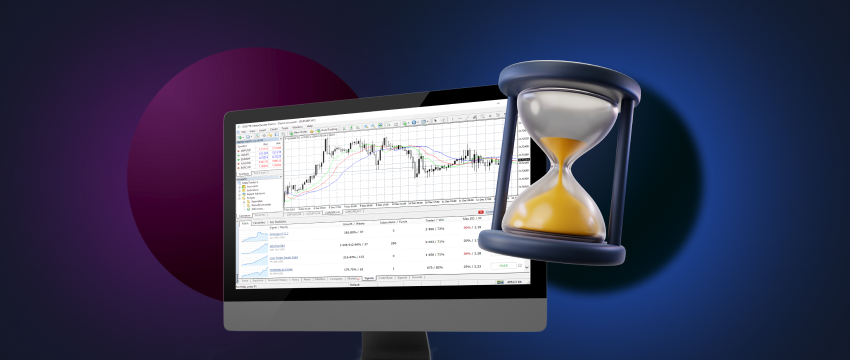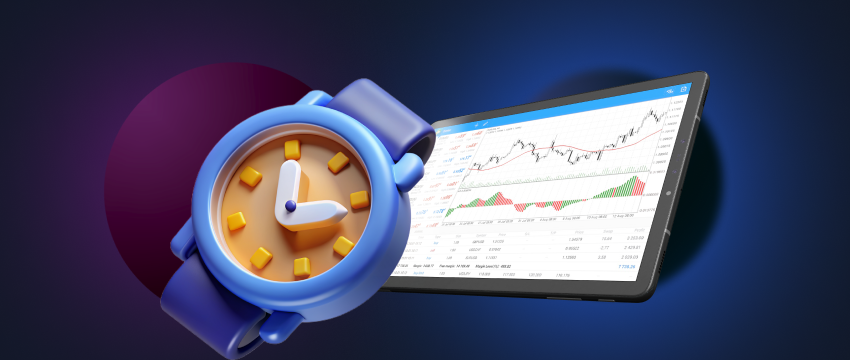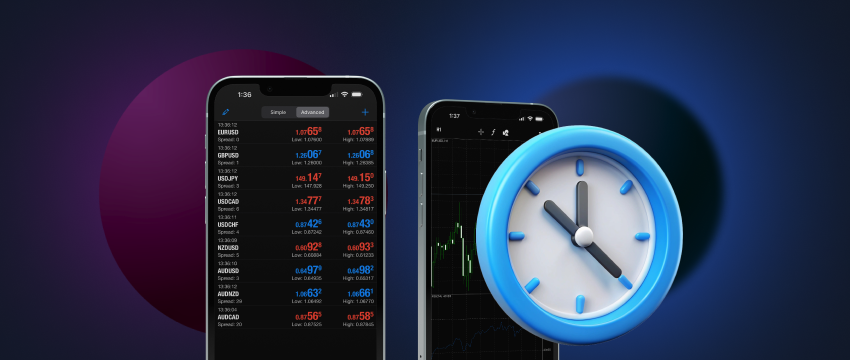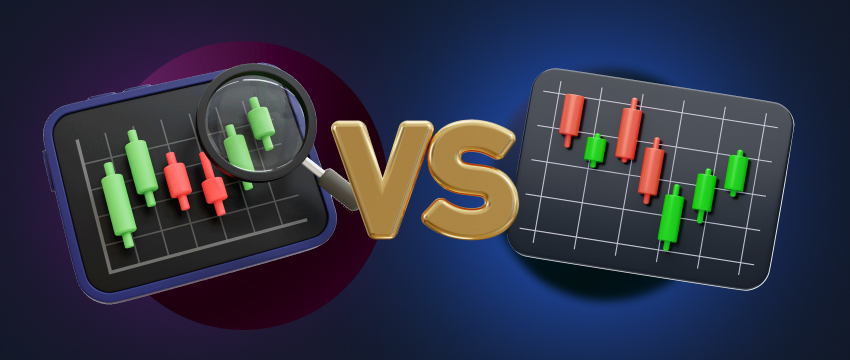Forex trading offers traders renowned flexibility. This is especially true regarding the time period during which they can conduct transactions in the forex market.
The forex market is essentially open 5 days a week. The market is available for trading 24 hours a day with the exception of weekends.
While decentralised, four primary sessions—Tokyo, New York, Sydney, and London—drive the trading hours. An overlap between sessions exists due to geographical time zones, and trading volumes typically vary depending on the session.
The forex market operates in several time zones. This allows traders to access it practically any time of day. The only exception is on weekends.
Forex trading hours more specifically:
- The global trading day begins with the Sydney market opening at 7:00 AM local time. This is 4:00 PM EST and 9:00 PM UTC. The Sydney market closes at 4:00 PM local time. This is 1:00 AM EST and 6:00 AM UTC.
- Tokyo follows the Sydney market. It opens at 9:00 AM local time. This corresponds to 7:00 PM EST and 12:00 AM UTC. Tokyo closes at 6:00 PM local time. This is 4:00 AM EST and 9:00 AM UTC.
- The London session opens at 8:00 AM local time. This is 2:00 AM EST and 7:00 AM UTC. The session closes at 5:00 PM local time. This corresponds to 11:00 AM EST and 4:00 PM UTC.
- Finally, the New York market opens at 8:00 AM local time (8:00 AM EST, 1:00 PM UTC) and closes at 5:00 PM local time (5:00 PM EST, 10:00 PM UTC).
Traders observe that the busiest trading period occurs during the overlap between the London and New York sessions. This overlap happens in the London afternoon and the New York morning.
This is when the majority of daily trading volume, amounting to trillions of dollars, takes place. The WM/Reuters benchmark spot and forward foreign exchange rates are also established at 4 p.m. London time. Money managers, pension funds, and other industry specialists widely use these for daily valuation and pricing.

How and what currencies are traded?
Traders involve the 10 most traded currencies in the world in approximately 90% of all trades. These are the USD, Euro, Japanese Yen, Pound sterling, Australian dollar, Canadian dollar, Swiss franc, Chinese renminbi, Hong Kong dollar, and the New Zealand dollar.
Majors, minors, and exotics
Traders trade currencies in pairs on the forex market using products like CFDs (Contracts for Difference). The most popular currency pairs include EUR/USD, USD/JPY, GBP/USD, AUD/USD, USD/CAD, USD/CHF, and the NZD/USD.
الكل major pairs include the USD. Minor currency pairs are those that don’t include the USD and examples include the GBP/JPY, EUR/CHF, EUR/GBP, EUR/AUD, GBP/CAD, and NZD/JPY. In comparison to the majors, the minors usually use slightly wider spreads and display a little less liquidity.
Exotic currency pairs include currencies from emerging markets. The pairs come with far wider spreads and offer far less liquidity.
Forex trading strategies
Forex trading, when approached with the right strategy, offers the potential for favourable returns. Popular strategies like day trading focus on daily position turnover to limit risk, while swing trading extends over days or weeks, exposing traders to overnight market movements.
Scalping seeks gains from minor price movements via numerous rapid trades, and position trading involves long-term commitments, sometimes lasting years. The analytical approach varies, with technical analysis predominating in short-term strategies and a blend of technical and fundamental analysis in longer-terms ones.
More on CFDs
CFDs are a form of derivative which means that when you trade them, you don’t take ownership of the underlying asset. The CFD broker and the trader enter into the contract, enabling the trader to speculate on the price movement of the asset, which, in the case of forex trading, is foreign exchange. Traders also use CFDs as highly leveraged instruments.
Leverage offers a trader the potential for larger exposure to the market than the amount they deposited to open the trade, amplifying profits should the trade be successful.
However, leverage is however highly risky, particularly if not managed properly, and can lead to particularly severe, adverse trading outcomes and substantial losses.
Choosing what hours to trade
Deciding what hours of the day to trade ultimately depends on three factors, your trading strategy, your favourite currency pairs, and your tolerance for risk. For instance, day traders and scalpers may prefer the high volatility of the London-New York overlap.
In contrast, swing traders might focus on quieter periods with less volatility. Additionally, traders must also consider their time zone and daily schedule as trading during the most active hours may lead to better execution and more profitable trades.
The impact of news releases on forex trading hours
Key drivers of forex market volatility includes economic news releases and geopolitical conflicts. Traders usually feel their impact most strongly during the London and New York sessions.
For example, U.S. non-farm payroll data, released on the first Friday of each month, often results in market movements. Traders should be aware of the timing of major news releases and economic indicators, as these can crease sharp price movements and increased volatility.
A useful tool for monitoring the news is an Economic Calendar. For instance, Trading Central’s Economic Calendar provides real-time economic coverage enabling traders to track and react to potential market-moving events.
By becoming a T4Trade trader, you can access the calendar to monitor events as they happen, map forex charts and indices to events, monitor historical trends, and track real-time, updated macro-economic data for more accurate trading decisions.

Having an effective risk management plan in place
Taking into account just how risky forex trading can be calls for a risk management plan that will help you mitigate large losses. This plan should be integrated into your overall trading strategy so that it aligns with your budget, the level of risk you’re willing to incur, and your specific trading objectives.
There are several ways that traders look to safeguard their funds and this includes:
- Using stop-loss orders to limit losses. The order is triggered when a price reaches a predetermined level, automatically closing the position.
- Implementing take-profit orders to lock in profits. Similar to stop-loss orders, the order is triggered when a price reaches a certain level, thereby locking in profits.
- Position sizing which refers to the size of the trader’s position based on the level of risk they’re prepared to incur.
- Diversification of currency pairs which means spreading one’s capital across multiple currencies instead of concentrating those funds in just one pair.
- Keeping a trading journal to record trades and the reasons for making those trades to avoid repeating mistakes in the future
- Focusing on their trading psychology. More than anything, managing one’s emotions whilst trading is key to making rational financial decisions. Trading decisions driven by feelings like fear, anxiety, stress or anger more often than not lead to poor trading outcomes. They lack reasoning and proper analysis, impacting the decision making process.

Trading with T4Trade
T4Trade is a popular broker among traders worldwide. It strives to offer an excellent trading experience. T4Trade provides access to one of the world’s most popular trading platforms, منصة MetaTrader 4.
It also offers extensive educational resources and tools, including a useful Economic Calendar to monitor key financial releases.
The CFD broker provides a range of account types, competitive spreads, and quick executions. Additionally, T4Trade ensures easy deposits and withdrawals.
Also available is a 24/5 multilingual customer support team that’s on hand to assist with any queries a trader might have.
إخلاء مسؤولية: This material is for general informational and educational purposes only and should not be considered investment advice or an investment recommendation. T4Trade is not responsible for any data provided by third parties referenced or hyperlinked in this communication.




